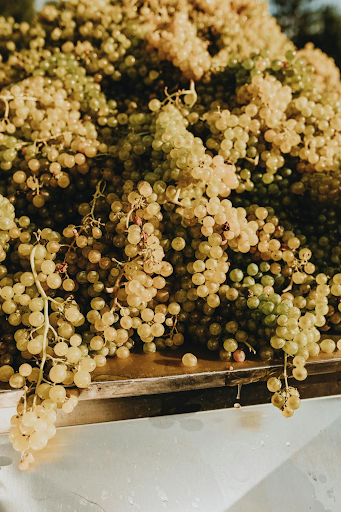
California Wine Regions: A Guide to the Golden State's Finest Vineyards
Matt CoenenCalifornia is synonymous with world-class wine, producing over 80% of the United States’ total wine output. From sun-drenched valleys to fog-kissed coastal hills, the state’s diverse climate and topography create ideal conditions for growing an array of grape varietals. Whether you’re drawn to the bold reds of Napa Valley, the refined Pinot Noirs of Sonoma or the sparkling wines of the North Coast, California offers something for every wine lover.
Beyond its reputation for fine wines, California is also home to an incredible wine culture, with sprawling estates, boutique family-run vineyards and a strong commitment to sustainability. This guide explores some of the state’s most celebrated wine regions, their unique characteristics and their signature varietals. Plus, we’ll highlight how Usual Wines sources from these esteemed areas, bringing the essence of California winemaking directly to your glass.
1. North Coast
The North Coast is California’s most prestigious wine-growing region, home to some of the most famous vineyards in the world. This expansive area includes Napa Valley, Sonoma County, Mendocino County and Lake County, each offering distinct climates, soils and varietals. With its cool coastal influences, diverse microclimates and a legacy of fine winemaking, the North Coast is the heart of California’s premium wine production.
Climate & Terroir
The region benefits from proximity to the Pacific Ocean, which moderates temperatures and creates ideal conditions for slow grape ripening. Morning fog, coastal breezes and varied elevations contribute to the complexity and balance of North Coast wines.
Notable Wines & Subregions
-
Napa Valley: Renowned for its Cabernet Sauvignon, which thrives in the valley’s warm, sunny days and cool evenings. Napa also produces high-quality Chardonnay and Merlot.
-
Sonoma County: Known for Pinot Noir and Zinfandel, particularly from regions like Russian River Valley and Dry Creek Valley. The cooler coastal climate also makes it ideal for Sauvignon Blanc.
-
Mendocino County: A pioneer in organic and sustainable winemaking, Mendocino is home to Pinot Noir, Chardonnay and aromatic white wines.
-
Lake County: Produces bold Cabernet Sauvignon and Sauvignon Blanc, benefiting from its high-elevation vineyards.
Mendocino County plays a significant role in sustainable winemaking, and here at Usual Wines we source our Red from this region, highlighting the area’s rich, fruit-forward Pinot Noir. Our Brut is also from the North Coast, making use of prized Napa and Sonoma grapes.
2. Central Valley
Stretching through the heart of California, the Central Valley is the workhorse of the state’s wine industry. This vast, sun-drenched region produces nearly 75% of California’s total wine grapes, supplying fruit for everything from mass-market wines to premium bottlings.
Climate & Terroir
The Central Valley’s hot, dry climate makes it ideal for high-yield grape production, though irrigation is essential. Unlike coastal regions, it lacks ocean breezes, leading to riper, fruit-forward wines. The fertile soil supports large-scale farming, making this region a key player in bulk wine production.
Notable Wines
-
Chenin Blanc: Known for its bright acidity and crisp, fruit-driven profile.
-
Zinfandel: A staple of California winemaking, producing bold, jammy reds.
-
Other Varietals: The region grows everything from Cabernet Sauvignon to Merlot and Chardonnay, with a focus on affordability and accessibility.
While the Central Valley is not as well-known for luxury wines, it plays a crucial role in supplying grapes for blended wines and large-scale production. The region’s accessibility and affordability make California wines available to a broad audience.
3. Sierra Foothills
The Sierra Foothills is a hidden gem in California winemaking, rich in history and bold, expressive wines. This region, which played a key role in the Gold Rush era, continues to produce intensely flavored reds, thanks to its rugged terrain and warm climate.
Climate & Terroir
With its high-elevation vineyards, the Sierra Foothills benefits from warm daytime temperatures and cool nighttime breezes, preserving acidity and enhancing complexity. The region’s rocky, well-drained soils contribute to concentrated flavors in the grapes.
Notable Wines
-
Zinfandel: The signature grape of the Sierra Foothills, known for its bold fruit flavors and rich, peppery spice.
-
Syrah: Deep, dark and full-bodied, with notes of blackberry and smoked meat.
-
Barbera: A lesser-known but outstanding varietal, offering vibrant acidity and bright cherry flavors.
Unlike larger commercial regions, the Sierra Foothills is home to small, family-owned wineries, many of which emphasize craftsmanship and unique, terroir-driven wines. Wine lovers seeking bold reds with a sense of place will find much to explore in this historic California region.
4. North Coast
Spanning from Monterey to Santa Barbara, the Central Coast is one of California’s most diverse and exciting wine regions. Known for its cool coastal influences and rolling vineyard landscapes, this region produces wines with bright acidity, elegant structure and complex flavors. Some of the most notable subregions include Paso Robles, Santa Barbara and San Luis Obispo (SLO), each with distinct terroirs and varietals.
Climate & Terroir
The Central Coast benefits from the marine influence of the Pacific Ocean, with cool fog and ocean breezes moderating the climate. This long growing season allows grapes to develop rich flavors while maintaining freshness. The diversity of microclimates supports both cool-climate varietals like Pinot Noir and Chardonnay and warmer-climate varietals like Cabernet Sauvignon and Rhône blends.
Notable Wines & Subregions
-
Paso Robles: A warm, inland region famous for Cabernet Sauvignon and Rhône varietals like Syrah and Grenache. The rolling hills and limestone-rich soils contribute to the bold, full-bodied style of Paso wines.
-
Santa Barbara County: Thanks to its unique transverse mountain ranges that funnel in cool ocean air, this region is ideal for Pinot Noir, Chardonnay and Syrah. The Santa Ynez Valley and Sta. Rita Hills AVAs are particularly well known.
-
San Luis Obispo (SLO): A rising star in California winemaking, known for elegant Rosé, Albariño and crisp white wines. Its cool-climate vineyards benefit from the Pacific breeze, creating wines with bright acidity and minerality.
San Luis Obispo plays a key role in California’s Rosé production, and we source our Rose from this region, capturing the fresh, fruity and crisp characteristics that define Central Coast wines.
5. Southern California
Though often overshadowed by its northern counterparts, Southern California is home to a growing wine scene, with boutique wineries producing unique and high-quality wines. This region includes Temecula Valley, Malibu Coast and San Diego County, each offering distinctive styles and experiences.
Climate & Terroir
Southern California has a Mediterranean climate, characterized by warm temperatures, ample sunshine, and ocean breezes. While some areas struggle with heat, higher-elevation vineyards and coastal influences help maintain balance in the wines.
Notable Wines & Subregions
-
Temecula Valley: The most well-known wine region in Southern California, famous for Viognier, Syrah, and Cabernet Sauvignon. The warm climate produces bold, fruit-driven wines with lush textures.
-
Malibu Coast: A relatively new AVA, offering small-lot, high-end wines with a focus on Bordeaux and Rhône varietals. Its coastal vineyards benefit from cool Pacific winds.
-
San Diego County: One of California’s oldest wine regions, now gaining recognition for Spanish and Italian varietals like Sangiovese and Nebbiolo.
Southern California’s wine industry is smaller in scale but high in quality, offering intimate tasting experiences, experimental winemaking, and stunning coastal vineyard views. With its growing reputation, the region is becoming a must-visit for wine lovers seeking something beyond the traditional California wine experience.
Looking for a new wine that uses premium California grapes? Explore our curated blends, which use the highest-quality grape varietals grown in Napa, Sonoma, Mendocino County and Paso Robles.
Frequently Asked Questions
1. What makes California wine regions unique?
California's wine regions are incredibly diverse, ranging from cool coastal vineyards to warm inland valleys, allowing for a wide variety of high-quality wines. The state’s unique combination of climate, soil and winemaking expertise makes it one of the world’s top wine producers.
2. Which California regions does Usual Wines source from?
Usual Wines carefully selects grapes from top California wine regions to ensure premium quality. Our Red comes from Mendocino County, our Brut from Napa and Sonoma, and our Rose from San Luis Obispo — each capturing the distinct character of its region.
3. What are the best wine regions in California to visit?
For classic wine country experiences, Napa Valley and Sonoma offer world-renowned vineyards and scenic tasting rooms. For something more relaxed, Paso Robles, Santa Barbara and Temecula provide boutique wineries, unique varietals and stunning landscapes.








